Darwin: His Time, his Works, his Influence
|
Darwin: his time, his works, his influence
Lopez Piñero Institute of History of Science and Medicine. Palau de Cerveró
(P. Cisneros, 4)
Opening: 20 February 09
Closing: September 09 |
| |
|
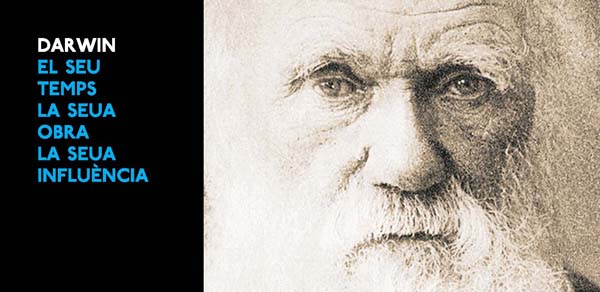 |
|
|
|
Organitza: |
 |
|
Patrocina: |
 |
Curators:
Victor Navarro, Science History Professor, Universitat de València
Jesús Català, Science History Lecturer, Cardenal Herrera University-CEU
www.uv.es/cdciencia
This year
is the 200th anniversary of possibly the most influential
naturalist ever, the English naturalist Charles R. Darwin (1809-1882), the
author who laid down the foundations of today’s central theory in the
explanation of life and its associated phenomena: the theory of evolution by
natural selection. The exhibition is intended to bring Darwin and his works
closer to the audience, within the context of his time, trying to understand
the deep influence he exerted. Universitat de València also wants to
celebrate another anniversary, namely that of the homage paid to the English
naturalist a hundred years ago by medical students supported by different
science and culture figures from València and Spain. On that occasion,
students paid tribute to someone who already was an unquestionable reference
in the history of knowledge but someone whose more general significance
unfortunately remains little understood today. |
|
|
|
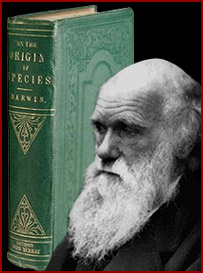
Charles
Darwin and On the Origin of the Species |
|
|
|
1. THE
EVOLUTION IDEA
Evolution
refers to the fact that living beings experience transformation over time.
Although this idea could be found more or less explicitly in previous
authors, it was only in the 18th century that it was put forward
as a serious alternative to the dominant opposite theory, i.e. life rules
are fixed and life was created by God. Within that framework, the diversity
of living beings was hierarchically represented as a big ladder on which
each species had a specific place, the more perfect the species the higher
its position in the rank. As evolution ideas spread, this view of the world
started to be questioned.
2.
EVOLUTION BEFORE DARWIN
Throughout the first half of the 19th century, the works of
figures like the French naturalist Jean-Baptiste Lamarck (1744-1829) and
other authors in different European countries contributed to circulating
evolution ideas not only with regard to the explanation of life but also in
respect of the views on human history and society. In spite of this, the
explanatory mechanisms proposed were highly contested and a lack of
empirical bases prevailed. In addition, ideological reservations –frequently
of a religious nature- also became an obstacle to the early dissemination of
evolution theory.
3.
DARWIN’S TIME
Darwin is
a typical example of an English citizen during the prime of the British
Empire, one made possible thanks to colonial expansion all over the world
and the implementation of changes in society’s economic foundations, with a
shift from a farming system to an industrial one. Darwin was born in a
well-off family connected to the growing pottery industry in the south of
England. The son and grandson of doctors, he could not escape the tradition
but soon neglected his medical studies and rejected an ecclesiastical career
too. |
|
|
|
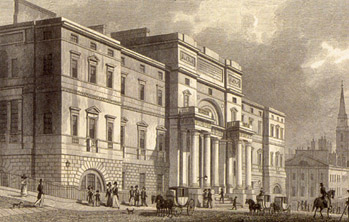
The University
of Edinburgh, where Darwin started a medical
degree |

Christ’s College, Cambridge
University, where Darwin trained to become a
parson |
|
|
|
|
4. THE
WAY TO FAME
Darwin
found an opportunity to fulfil his real vocation as a naturalist on his
voyage on HMS Beagle and its scientific mission in the
southern seas. Between 1831 and 1836, the journey allowed Darwin to have
access to numerous geological and biological phenomena that changed his own
view on the operation of life and the world. Upon his return to England,
Darwin married his cousin Emma Wedgwood and started a family. His prestige
as a scientist grew as he wrote different studies based on the materials
collected in the expedition and other research. The piece of work that was
to bring him the greatest fame was still being matured in silence.
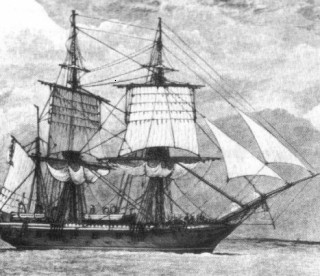
The Beagle,
a British Royal Navy ship, on which Darwin travelled and compiled his data
on the natural world.
5.
FROM ANXIETY TO CONTROVERSY
The idea
that species transformed does not stem from Darwin. What Darwin did
contribute, though, was the natural selection mechanism to try and explain
slow and gradual transformation. Darwin also thought that natural selection
caused random variations in individuals within species, this causing some
subjects to be better prepared than others. Selection so marked a trend of
divergence which separated new species from ancestral ones. In sum, this is
the core of Darwin’s theory which he only dared publish when another
naturalist, Russel Wallace (1823-1913), sent him a letter in 1858 from
Malaysia with similar ideas. Darwin’s friends came up with a solution to do
Wallace justice but at the same time respect Darwin’s priority. Darwin
finally published his most prominent work, On the Origin of Species,
the following year. He delayed the public exposure of his ideas because he
was aware of the controversial implications they would bring along. Indeed,
he was supported by those seeking a new view of the world and harshly
attacked by those anchored in old interpretations of nature. |
|
|
|
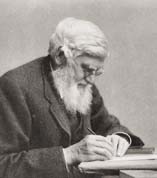
Alfred Russell Wallace, joint
creator of the theory of natural selection |
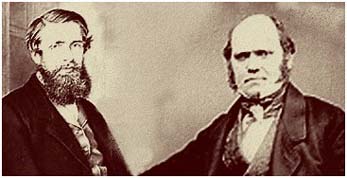
Wallace
and Darwin |
|
|
|
|
6. THE
PATRIARCH OF EVOLUTION
On the
Origin of Species
meant a great deal of fame for Darwin but his activity, however, did not
wane. He continued writing numerous science books over the following
decades. One of the most controversial questions addressed by Darwin in
those years was the origin and evolution of humans, as his proposal could be
seen as a denial of all the distinctive rights that Western thinking had
provided mankind with in order to differentiate it from animals. That only
contributed to reinforcing the symbolic aspect of Darwin’s figure. From his
home in the small village of Downe, Darwin forged an amazing network of
correspondents with whom he would exchange information. His home was also a
meeting point for evolution defenders and the venue of research and
experimentation. |
|
|
|
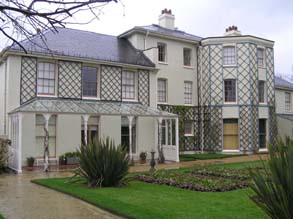 |
 |
|
1882
print of Downe House, Darwin’s home, from where he built a network of
scientific correspondence. |
|
|
|
7. THE
ECLIPSE OF DARWINISM
Staying
loyal to Darwinism became a difficult task. Despite their self-definition as
Darwinist, very few authors took on Darwin’s postulates to the full. A major
problem was the acceptance of evolution as being random. Another one, the
fact that natural selection had the potential argued by Darwin. All this led
to a revival of Lamarck’s ideas and different directed evolution theories.
This explains why Darwinism eclipsed in the late 19th century and
the early 20th. Darwin managed to make the evolutionary fact
plausible but the particular aspects of his proposals were not convincing.
Yet, over time, his ideas were finally admitted. |
|
|
|
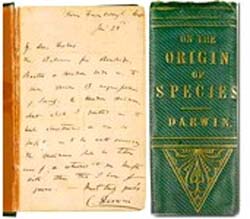
Charles Darwin manuscript and book spine of the first edition
of On the Origin of Species |
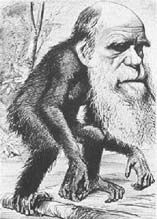
Caricature of Darwin with an ape body, the reflection of criticism
to his theory |
|
|
|
8. THE
NEW DARWINIST SYNTHESIS
Between
the 1930s and 1940s, genetics was able to reconcile change mechanisms in
hereditary material with natural selection and random variation. Zoologists
and botanists offered new studies on the appearance of species based on
geographical and environmental circumstances. In turn, palaeontologists
adjusted the pace of organic change to geologic time. All this gave
prominence back to Darwin’s theories as the basis of our knowledge of
evolutionary phenomena. |
|
|
|
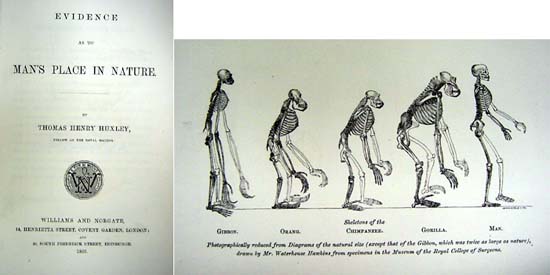
Cover of the book by T.H. Huxley,
Man’s place in nature, and illustration with the
skeletons of a gibbon, orang-utan, chimpanzee, gorilla
and a man, inspired in Huxley and popularised by Ernst
Haeckel: a symbolic image of evolution. |
|
|
|
9.
EVOLUTION IN VALÈNCIA
València
played a significant role in the dissemination of Evolution Theory in Spain.
The first dissemination attempts were made by Rafael Cisternas (1818-1876),
from Barcelona, a natural history professor. In turn, Peregrí Casanova
(1849-1919), an anatomy professor, kept a high profile in the circulation of
evolutionary thinking in València while the most relevant scientific
contributions along the lines of Evolution Theory were those of the
naturalist Eduard Boscà (1843-1924), the author of studies on Iberian
reptiles and amphibians and an outstanding palaeontologist.
The most
conservative sectors expressed their anti-evolution views. An example is the
logic and psychology professor Manuel Polo y Peyrolón (1846-1918) from the
Secondary Education Institute of València. Milder opposition examples are
also found, with a focus on scientific discussion rather than ideology. The
most known Valencian author was Joan Vilanova i Piera (1821-1893), a
palaeontology professor at the Central University (Madrid). |
|
|
|
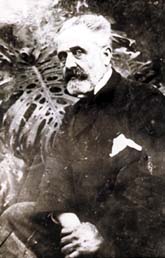
Eduard Boscà |
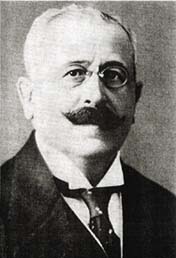
Peregrín Casanova |
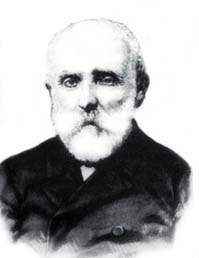
Joan Vilanova |
|
|
|
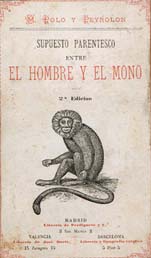
Cover of the antievolutionary book
Supuesto parentesco entre el hombre y el mono, by M.
Polo y Peyrolón |
|
|
|
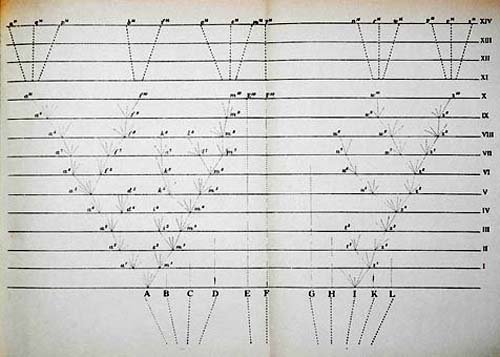
Esquema de la divergència,
inclòs en L'Origen de les espècies |
|
|
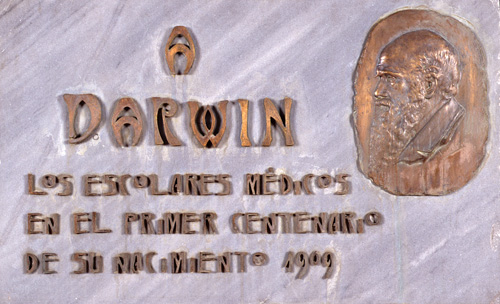
Placa que se colocó en la Facultad de Medicina
con motivo del Homenaje a Darwin |
| |
[<] Back
|
|